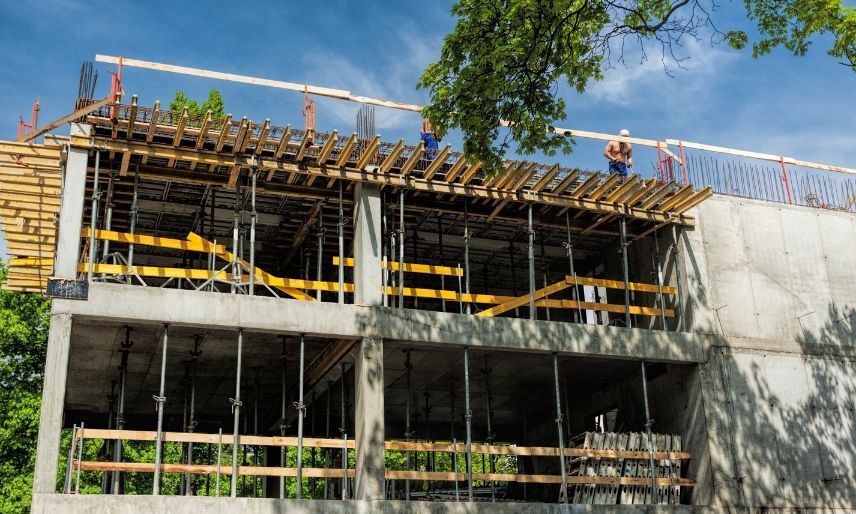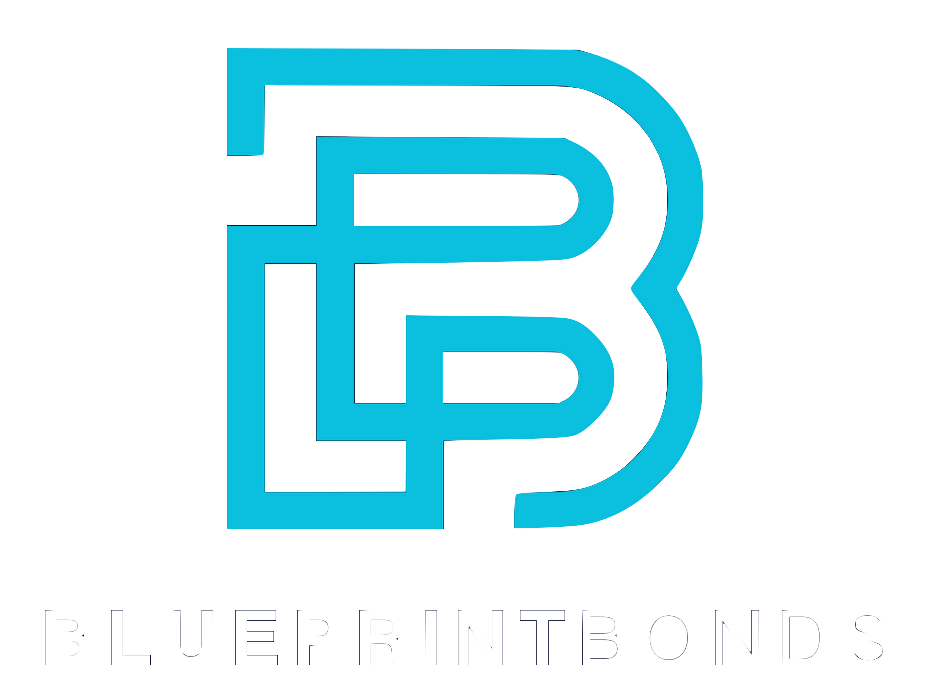General contractors (GCs) in Texas face a growing challenge: managing subcontractor risk amid rising defaults and financial strain in the construction sector. Recent data reveals a sharp increase in subcontractor distress, with 70% of industry respondents noting more defaults than the previous year. This trend is compounded by soaring material prices, labor costs, and payment delays that now stretch beyond 30 days for over 80% of contractors. Against this backdrop, surety bonds have become a vital tool for Texas GCs to protect their projects and bottom lines.
Understanding how bonds function and why they matter in today’s market is essential for any contractor looking to mitigate risk effectively. This article explores the role of bonds in managing subcontractor risk, the types of bonds commonly used, and how Texas GCs leverage these instruments to maintain project stability.
For a closer look at the rising subcontractor defaults and the financial pressures driving them, see this AGC/FMI Survey on subcontractor distress.
Why Subcontractor Risk Is Increasing in Texas
The construction landscape in Texas has shifted dramatically over recent years. Between 2022 and 2023, material costs and skilled labor wages jumped significantly, squeezing subcontractor profit margins. This squeeze has made it harder for many subcontractors to maintain liquidity and meet contractual obligations on time.
One study highlighted how labor market disruptions following events like Hurricane Harvey caused wage spikes that persisted for years, illustrating how external shocks can ripple through the construction workforce and impact subcontractor viability. In Texas, similar pressures have emerged from supply chain disruptions and inflationary trends. The ongoing effects of the COVID-19 pandemic have also exacerbated these issues, leading to a shortage of materials and a backlog in project timelines. As demand for construction services continues to rise, the competition for available resources has intensified, further driving up costs and complicating project execution.
In addition to cost pressures, payment delays have become a serious issue. In 2024, 82% of contractors reported payment delays exceeding 30 days, up sharply from 49% in 2022. These delays strain subcontractors’ cash flow, increasing the risk they will default on their commitments. The ripple effect of these financial strains can lead to project delays, increased costs, and even legal disputes, creating a cycle of instability that can be difficult to break. Subcontractors often find themselves in a precarious position, where they must balance the need to pay their workers and suppliers against the uncertainty of when they will receive payment from general contractors.
With these challenges mounting, GCs must find reliable ways to protect their projects from the fallout of subcontractor failures. Bonds offer one of the most effective risk management solutions in this environment. By securing performance and payment bonds, general contractors can ensure that subcontractors are incentivized to complete their work on time and within budget. Moreover, these bonds provide a safety net that can help mitigate financial losses in the event of a subcontractor default. However, the increasing costs associated with securing these bonds can also add another layer of complexity for GCs, who must weigh the benefits against the additional financial burden. As the construction industry in Texas continues to evolve, understanding these dynamics will be crucial for all stakeholders involved.
Understanding the Role of Surety Bonds in Subcontractor Risk Management
Surety bonds serve as a financial guarantee that subcontractors will fulfill their contractual duties. When a subcontractor defaults, the bond provides a safety net that allows the GC to recover costs or find a replacement without jeopardizing the project timeline. This assurance is particularly crucial in the construction industry, where delays can lead to significant financial losses and reputational damage.
There are several types of bonds relevant to subcontractor risk:
- Performance Bonds: Guarantee that the subcontractor will complete the work according to contract terms.
- Payment Bonds: Ensure subcontractors pay their suppliers and laborers, protecting the GC from liens and claims.
- Subcontractor Default Insurance (SDI): A relatively newer option that covers losses from subcontractor defaults but differs from bonds in structure and application.
The National Association of Surety Bond Producers (NASBP) provides detailed comparisons between subcontractor bonds and SDI, emphasizing that bonds remain a cornerstone for managing subcontractor risk due to their proven track record and regulatory acceptance. This is particularly important in maintaining trust among stakeholders, as bonds signal a commitment to accountability and financial responsibility.
For more on how surety bonds compare with SDI, visit the NASBP resource library.
Why Bonds Are Preferred by Texas GCs
Bonds offer several advantages that make them particularly valuable to GCs in Texas:
- Financial Security: Bonds provide immediate financial recourse if a subcontractor fails.
- Project Continuity: They help maintain project schedules by enabling quick subcontractor replacement.
- Risk Transfer: Bonds shift much of the financial risk from the GC to the surety company.
- Regulatory Compliance: Many public projects require bonds by law, making them a necessary safeguard.
While Subcontractor Default Insurance offers an alternative, it is not suitable for every contractor. Research by Professor Dennis C. Bausman, Ph.D., shows that prime contractors who use SDI report high satisfaction, but the product’s fit depends on the contractor’s size, project type, and risk tolerance. This variability underscores the importance of understanding the unique needs of each project and the associated risks to make informed decisions regarding risk management tools.
Moreover, the landscape of construction is evolving, with increasing emphasis on sustainability and innovation. As GCs navigate these changes, the role of surety bonds may expand to include considerations for environmentally responsible practices and the financial implications of adopting new technologies. The integration of such factors into risk management strategies could further enhance the value of bonds in the construction process.
More on SDI’s suitability and contractor satisfaction can be found in this study by Professor Dennis C. Bausman.
How Texas GCs Implement Bonds in Their Risk Management Strategies
In practice, Texas GCs integrate bonds into their subcontractor vetting and contract processes. Before awarding contracts, GCs often require subcontractors to provide performance and payment bonds. This requirement acts as a filter, ensuring only financially stable and reputable subcontractors participate. By scrutinizing the financial health and past performance of subcontractors, GCs can mitigate risks associated with project delays and subpar work quality, which are critical in maintaining project timelines and budgets.
During project execution, bonds provide peace of mind. If a subcontractor encounters financial trouble or fails to meet deadlines, the GC can call on the surety to address the issue. This mechanism protects the GC from costly delays and legal complications. Furthermore, the presence of bonds encourages subcontractors to adhere to high standards of performance, knowing that their financial credibility is at stake. This dynamic fosters a culture of accountability and diligence among subcontractors, ultimately benefiting the overall project outcome.
Moreover, bonds can enhance a GC’s reputation with project owners and lenders by demonstrating proactive risk management. This can lead to more opportunities and better financing terms. A GC that consistently employs bonds as part of their risk management strategy signals to stakeholders that they prioritize financial integrity and project reliability, which can be a decisive factor in winning bids for future projects.
Case Example: Managing Defaults Amid Rising Costs
Consider a Texas GC managing a large commercial project in 2024. With material prices up and payment delays common, the GC requires all subcontractors to post bonds. When a subcontractor struggles to pay suppliers due to delayed payments from the GC’s client, the payment bond steps in, ensuring suppliers are paid and work continues uninterrupted. This proactive measure not only protects the GC’s interests but also maintains the trust and collaboration with the subcontractors, as they feel secure in their financial dealings.
This approach reduces the risk of liens and project stoppages, which can be devastating in tight-margin projects. The GC’s use of bonds turns a potential crisis into a manageable event, preserving both schedule and budget. Additionally, by having a clear process for invoking bonds, the GC can maintain open lines of communication with all parties involved, ensuring that everyone is informed and aligned throughout the project lifecycle. This transparency can be crucial in navigating the complexities of construction projects, especially in an environment where costs are volatile and timelines are critical.
Comparing Bonds and Subcontractor Default Insurance
While bonds are well-established, Subcontractor Default Insurance (SDI) has gained attention as an alternative risk management tool. SDI provides coverage for losses due to subcontractor default but works differently from surety bonds.
SDI is a form of insurance rather than a guarantee from a surety company. It can offer broader coverage in some cases but may not provide the same level of direct financial protection or project continuity assurances that bonds do.
Texas GCs considering SDI should weigh the product’s benefits against its limitations. SDI can be cost-effective and simpler to administer for certain contractors, but it may not meet the requirements of all projects, especially public or heavily regulated ones.
For a detailed comparison, the NASBP report on subcontractor bonds and SDI offers valuable insights.
Additionally, it is important to consider the specific circumstances of each project when deciding between bonds and SDI. For instance, the nature of the subcontractors involved, the complexity of the project, and the financial stability of those subcontractors can significantly influence the decision. In projects with high-risk subcontractors or where the financial stakes are particularly high, the reliability of bonds may provide a sense of security that SDI cannot match. Conversely, in more straightforward projects with reliable subcontractors, SDI may offer a more flexible and less burdensome option.
Moreover, the evolving landscape of construction risk management means that Texas GCs should stay informed about emerging trends and changes in regulations that may affect their choice between bonds and SDI. As the construction industry continues to innovate, understanding the nuances of these risk management tools will be crucial for ensuring both compliance and project success. Engaging with industry experts and attending relevant workshops can also provide deeper insights into the most effective strategies for managing subcontractor risks.
What Texas GCs Should Consider When Using Bonds
Choosing the right bonding strategy involves several considerations:
- Subcontractor Financial Health: Bonds are most effective when paired with thorough subcontractor prequalification.
- Project Size and Complexity: Larger, more complex projects often require more comprehensive bonding.
- Cost Impact: Bond premiums add to subcontractor costs, which may affect bids and negotiations.
- Legal and Contractual Requirements: Public projects often mandate bonds, while private projects may not.
Understanding these factors helps GCs tailor their risk management approach and select the right mix of bonds and insurance products.
Additionally, GCs should be aware of the different types of bonds available, such as performance bonds, payment bonds, and bid bonds. Each type serves a specific purpose and offers varying levels of protection. For instance, performance bonds ensure that the contractor will fulfill their obligations as per the contract, while payment bonds guarantee that subcontractors and suppliers will be paid for their work. This distinction is crucial, as it can significantly impact the project's financial stability and overall success.
Moreover, it’s essential for GCs to maintain open lines of communication with their bonding agents. A strong relationship can lead to better terms and conditions, as well as valuable insights into the bonding market. Bonding agents can provide guidance on emerging trends and help GCs navigate the complexities of bonding requirements, especially in a state as diverse as Texas, where regulations and market conditions can vary widely by region. By leveraging these resources, GCs can enhance their project planning and execution strategies, ultimately leading to more successful outcomes.
Wrapping Things Up: The Strategic Value of Bonds for Texas GCs
In a market where subcontractor defaults are rising and financial pressures are mounting, bonds remain a cornerstone of risk management for Texas general contractors. They provide a reliable safety net that protects project timelines, finances, and reputations.
While alternatives like Subcontractor Default Insurance offer options, bonds’ proven effectiveness and regulatory acceptance make them indispensable for many GCs. By requiring bonds, thoroughly vetting subcontractors, and understanding the nuances of these financial tools, Texas GCs can navigate the current challenges with greater confidence.
Moreover, the landscape of construction financing is evolving, and understanding the intricacies of bonds can significantly enhance a contractor's competitive edge. For instance, performance bonds not only ensure that subcontractors will complete their work but also serve as a testament to the contractor's commitment to quality and reliability. This can be particularly appealing to project owners who are increasingly looking for assurances in a volatile market. Additionally, the ability to leverage bonds as a financial instrument can improve cash flow management, allowing GCs to allocate resources more effectively across multiple projects.
Furthermore, the educational aspect of bonds cannot be overlooked. Many Texas GCs are investing in training programs and workshops to better understand bonding requirements and processes. This proactive approach not only equips them with the knowledge to make informed decisions but also fosters stronger relationships with surety companies. By engaging in open dialogues with sureties, GCs can gain insights into the underwriting process, which can lead to more favorable bonding terms and conditions. This collaborative effort is essential in a climate where financial stability is paramount, and it underscores the importance of bonds as a strategic tool in the construction industry.
For more on the increasing subcontractor defaults and how they impact the industry, see the detailed analysis in the
AGC/FMI Survey.
Frequently Asked Questions
Q: What is a surety bond in construction?
A surety bond is a financial guarantee that a subcontractor will fulfill their contract obligations. If they fail, the bond provides compensation to the GC or project owner.
Q: How do bonds protect general contractors?
Bonds protect GCs by transferring the financial risk of subcontractor default to the surety company, ensuring project completion and payment to suppliers.
Q: What is the difference between a bond and Subcontractor Default Insurance?
Bonds are guarantees from surety companies, while SDI is an insurance policy covering losses from subcontractor defaults. Bonds often provide more direct project protection.
Q: Are bonds required on all Texas construction projects?
Not all projects require bonds, but many public projects and large private projects mandate them to reduce risk.
Q: How do rising material and labor costs affect subcontractor risk?
Higher costs squeeze subcontractor profit margins, increasing the chance of defaults and making bonds more critical for risk management.
Q: Can payment delays cause subcontractor defaults?
Yes. Payment delays exceeding 30 days, reported by 82% of contractors in 2024, strain subcontractor cash flow and increase default risk.
Q: How can GCs evaluate if Subcontractor Default Insurance is right for them?
GCs should consider project size, risk tolerance, and contract requirements, and consult studies like those by Professor Dennis C. Bausman for insights on SDI suitability.




